Integrated workflow for analysis of immune enriched spatial proteomic data with IMmuneCite
- PMID: 40102469
- PMCID: PMC11920390
- DOI: 10.1038/s41598-025-93060-y
Integrated workflow for analysis of immune enriched spatial proteomic data with IMmuneCite
Abstract
Spatial proteomics enable detailed analysis of tissue at single cell resolution. However, creating reliable segmentation masks and assigning accurate cell phenotypes to discrete cellular phenotypes can be challenging. We introduce IMmuneCite, a computational framework for comprehensive image pre-processing and single-cell dataset creation, focused on defining complex immune landscapes when using spatial proteomics platforms. We demonstrate that IMmuneCite facilitates the identification of 32 discrete immune cell phenotypes using data from human liver samples while substantially reducing nonbiological cell clusters arising from co-localization of markers for different cell lineages. We established its versatility and ability to accommodate any antibody panel and different species by applying IMmuneCite to data from murine liver tissue. This approach enabled deep characterization of different functional states in each immune compartment, uncovering key features of the immune microenvironment in clinical liver transplantation and murine hepatocellular carcinoma. In conclusion, we demonstrated that IMmuneCite is a user-friendly, integrated computational platform that facilitates investigation of the immune microenvironment across species, while ensuring the creation of an immune focused, spatially resolved single-cell proteomic dataset to provide high fidelity, biologically relevant analyses.
Keywords: Immune microenvironment; Informatics pipeline; Single cell proteomics; Spatial biology.
© 2025. The Author(s).
Conflict of interest statement
Competing interests: A provisional U.S. Patent of this pipeline has been filed by authors JE, SB, and AB (Processing Multiplexed Images and Analysis of Immune Enriched Spatial Proteomic Data. U.S. Patent serial number 63/562,886, filed March 8, 2024. Patent pending). All the remaining authors declare no conflict of interest.
Figures
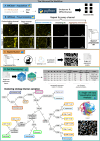
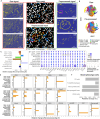
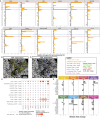
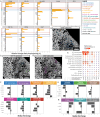

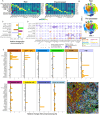

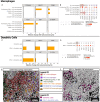
Update of
-
IMmuneCite: an integrated workflow for analysis of immune enriched spatial proteomic data.Res Sq [Preprint]. 2024 Jul 9:rs.3.rs-4571625. doi: 10.21203/rs.3.rs-4571625/v2. Res Sq. 2024. Update in: Sci Rep. 2025 Mar 19;15(1):9394. doi: 10.1038/s41598-025-93060-y. PMID: 39041033 Free PMC article. Updated. Preprint.
Similar articles
-
IMmuneCite: an integrated workflow for analysis of immune enriched spatial proteomic data.Res Sq [Preprint]. 2024 Jul 9:rs.3.rs-4571625. doi: 10.21203/rs.3.rs-4571625/v2. Res Sq. 2024. Update in: Sci Rep. 2025 Mar 19;15(1):9394. doi: 10.1038/s41598-025-93060-y. PMID: 39041033 Free PMC article. Updated. Preprint.
-
Point-cloud segmentation with in-silico data augmentation for prostate cancer treatment.Med Phys. 2025 Jul;52(7):e17815. doi: 10.1002/mp.17815. Epub 2025 Apr 3. Med Phys. 2025. PMID: 40181592 Free PMC article.
-
Contrast-enhanced ultrasound for the diagnosis of hepatocellular carcinoma in adults with chronic liver disease.Cochrane Database Syst Rev. 2022 Sep 2;9(9):CD013483. doi: 10.1002/14651858.CD013483.pub2. Cochrane Database Syst Rev. 2022. PMID: 36053210 Free PMC article.
-
Management of people with intermediate-stage hepatocellular carcinoma: an attempted network meta-analysis.Cochrane Database Syst Rev. 2017 Mar 10;3(3):CD011649. doi: 10.1002/14651858.CD011649.pub2. Cochrane Database Syst Rev. 2017. PMID: 28281295 Free PMC article.
-
Magnetic resonance imaging for the diagnosis of hepatocellular carcinoma in adults with chronic liver disease.Cochrane Database Syst Rev. 2022 May 6;5(5):CD014798. doi: 10.1002/14651858.CD014798.pub2. Cochrane Database Syst Rev. 2022. PMID: 35521901 Free PMC article.
Cited by
-
An integrated approach for analyzing spatially resolved multi-omics datasets from the same tissue section.Front Mol Biosci. 2025 Jul 15;12:1614288. doi: 10.3389/fmolb.2025.1614288. eCollection 2025. Front Mol Biosci. 2025. PMID: 40735471 Free PMC article.
-
Cancer systems immunology reveals myeloid-T cell interactions and B cell activation mediate response to checkpoint inhibition in metastatic breast cancer.bioRxiv [Preprint]. 2025 Jun 13:2025.06.09.658361. doi: 10.1101/2025.06.09.658361. bioRxiv. 2025. PMID: 40661534 Free PMC article. Preprint.
References
MeSH terms
Substances
Grants and funding
LinkOut - more resources
Full Text Sources

